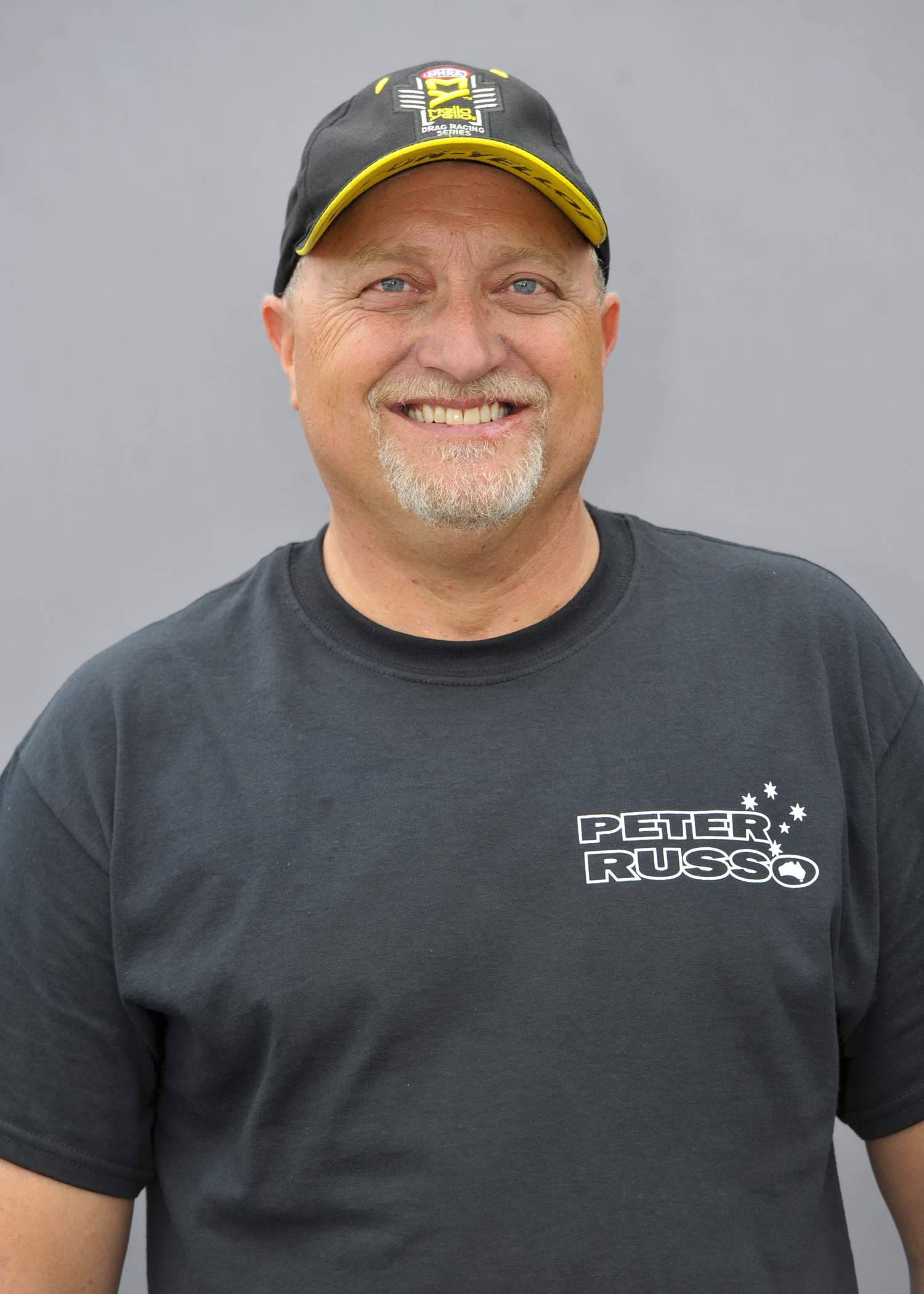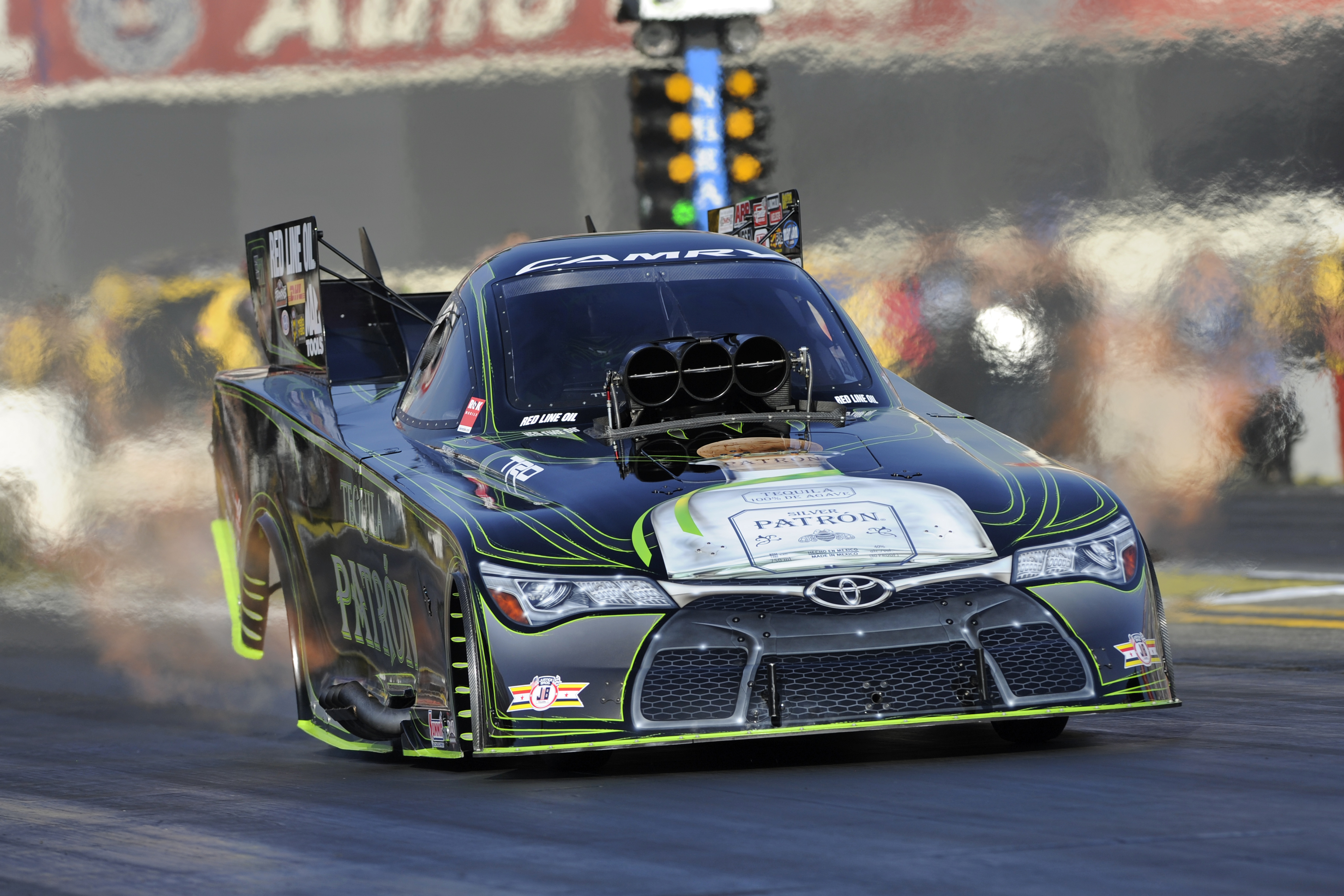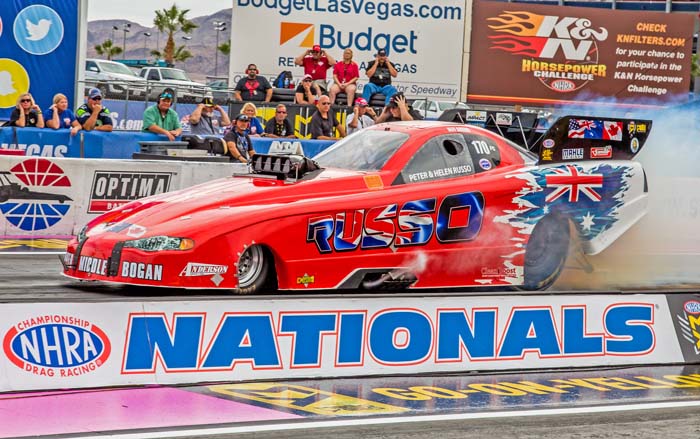AREND DISCUSSES HIS FIRST 3-SECOND PASS AND MORE

Arend, who has been competing in NHRA’s ranks off and on since 1995, had never made a 3-second pass.
That changed at the season-ending NHRA Auto Club Finals last month in Pomona, Calif.
Arend, serving as a substitute driver for Alexis DeJoria at Kalitta Motorsports, clocked a personal-best 3.930-second time at 317.19 mph.
DeJoria, who pilots the Tequila Patrón Toyota Camry Funny Car for the Kalitta team was sidelined because of a concussion.
“It was awesome,” said Arend about his 3-second lap. “When I stopped driving (full-time) was before they had laid back headers. The last run I made (when driving full time) was a 4.036 and that's when a 4.03 was quick. (in 2012 at the season-ending NHRA Finals). When I got the call to drive for (Kalitta Motorsports) I was honored, but I also was a little apprehensive because I knew from talking to Del (Worsham) that the (Funny Cars) were a lot harder to drive than they used to be. The front-end is lighter and they don’t steer all that well and then if they drop cylinders, they really want to turn you left or right a lot more than they did before. I wasn’t really nervous, but I was a little apprehensive.”
During his 3-second pass, Arend could tell things were going well.

Prior to filling in for DeJoria, Arend had done some limited racing in 2016 for Peter and Helen Russo. Arend qualified the Russo’s Funny Car No. 16 at the Las Vegas fall race with a 4.04-second elapsed time at 302.55 mph, which anchored the quickest field to that point in Funny Car history.
"It was fun to work with the Russos because in addition to driving the car, I also did the clutch and helped out in the tune-up department," Arend said. "It was definitley very rewarding and we were looking forward to trying to make a 3-second run at Pomona.
 “That was only my third full run of the year when I went that 3.93 in the Patron car, so that made things a little tougher, but it was really exciting. It was probably good for me to get to make that run in (Russo’s Funny Car) before I filled in for Alexis. With the Russo car, they had the first design laid-back headers, which were the 45-degree ones, and now they are 58 degrees back, which is what Alexis's car had.”
“That was only my third full run of the year when I went that 3.93 in the Patron car, so that made things a little tougher, but it was really exciting. It was probably good for me to get to make that run in (Russo’s Funny Car) before I filled in for Alexis. With the Russo car, they had the first design laid-back headers, which were the 45-degree ones, and now they are 58 degrees back, which is what Alexis's car had.”
Arend upset Matt Hagan in the first round at Pomona before losing in round two to Courtney Force. Arend clocked a 3.979-second elapsed time against Force with a career-best 323.97 mph.
“I really wanted to do well filling in for Alexis and in the end it worked out great,” Arend said. “Funny Cars usually bounce the left front wheel up and down on a run, but you still have the right front on the ground. With the balance on (Alexis’ car) both wheels were in the air quite a bit, a lot more than normal. It was adventure, especially in the first round. You could tell both the wheels were off the ground and the steering wasn’t there. It was one of the wilder runs I’ve ever had. It happens so fast and when you have the wheels in the air for 100 feet it only lasts a couple tenths of a second, but trust me when you are driving it feels like two seconds. It definitely got my attention.”
Arend was plenty familiar with Kalitta Motorsports, having driven the team’s DHL Funny Car from midway through the 2008 NHRA season until the end of the 2012 campaign.
“I saw other drivers like Cruz (Pedregron, who made that wheelstand) and there was nothing anybody could have done on that run, and you look at John Hale’s car with his wheelstand and I just saw a lot more wheelstands happening around halftrack and you don’t want to see that in my opinion,” Arend said. “The cars have gotten a lot heavier because to keep the front end down, most of the big teams put 50 to 75 pounds either over the left front fire bottle or right at the front end. Now, the car will weigh like 2,685 instead of like 2585, which makes it harder to slow down. The other thing with is it, you have to run the rear-wing so low to keep the front end on the ground, there’s no de-acceleration anymore, so if you have a chute failure, your chance of getting the car stopped at a short track like Pomona is greatly reduced now, especially if you are not on your game. There were a few points I looked at, and I just don’t want to see people get hurt. My proposal was to look at it and talk to the teams and maybe go back to the 45 degrees (laid-back headers). The cars would still run, in good conditions, high 3.80s. I just think that would make the cars a little safer to drive. NHRA did send an email to all the teams to get their input but no matter what happens, I am always "in" to drive one if the right opportunity comes up!”






































